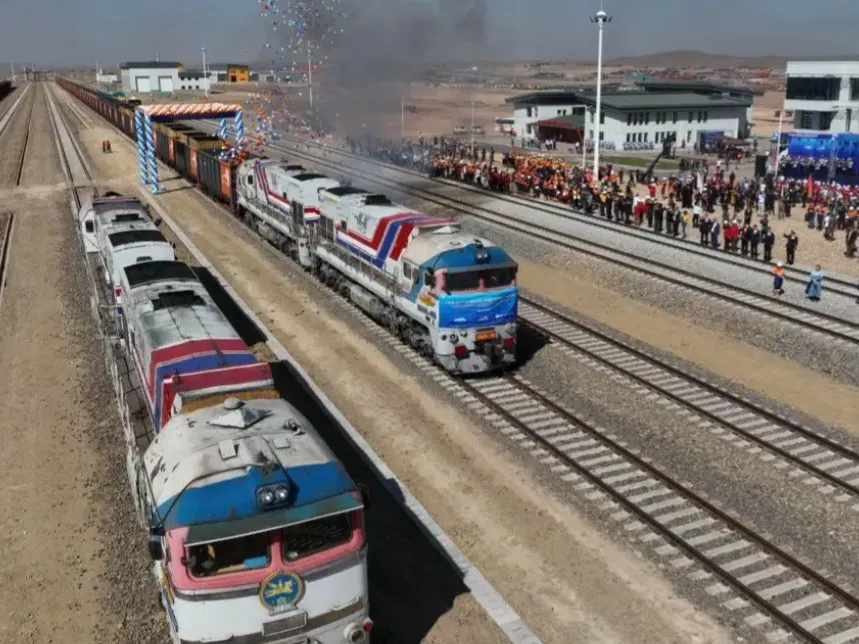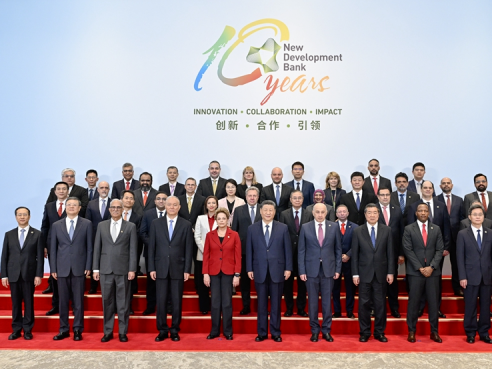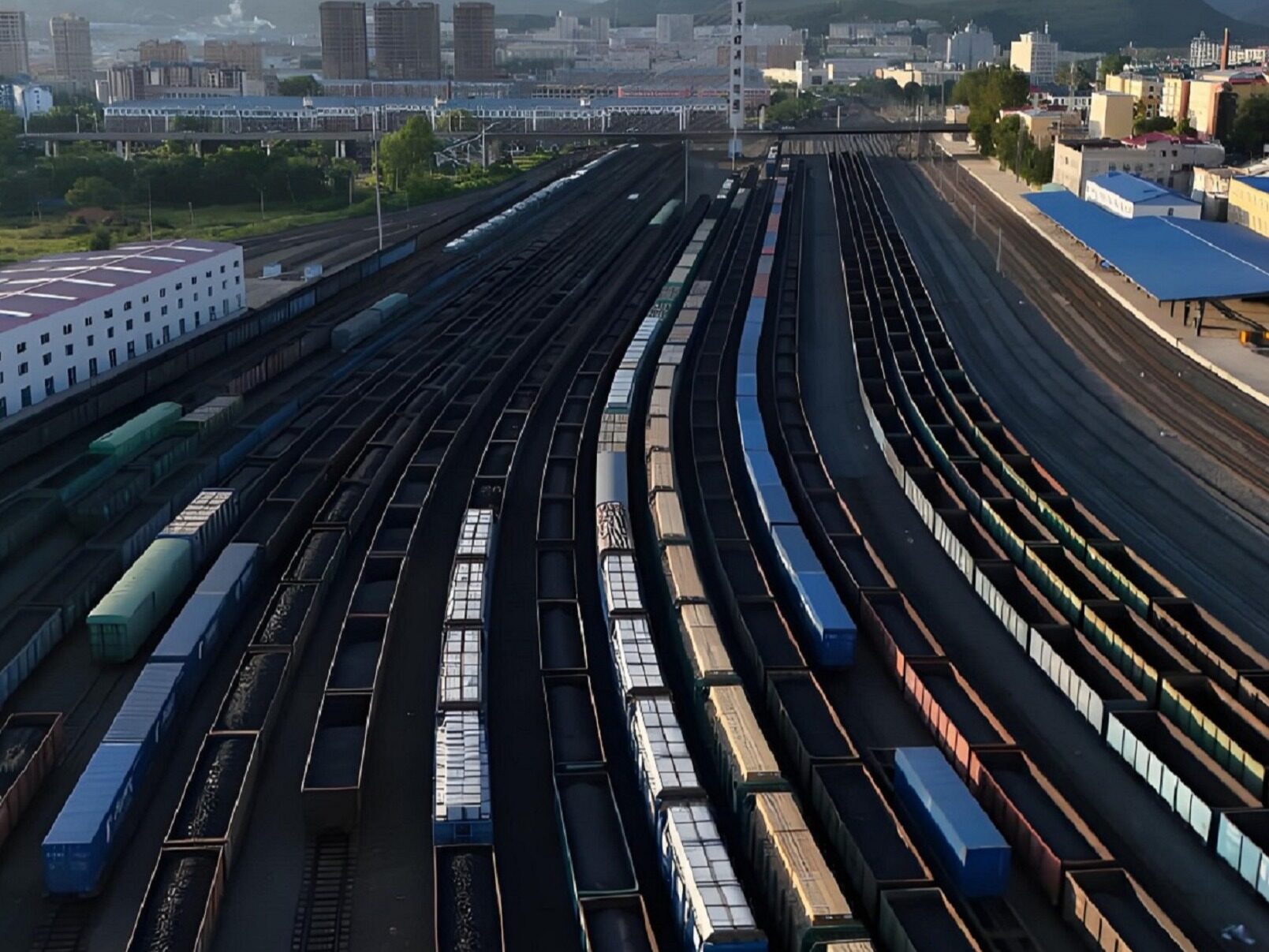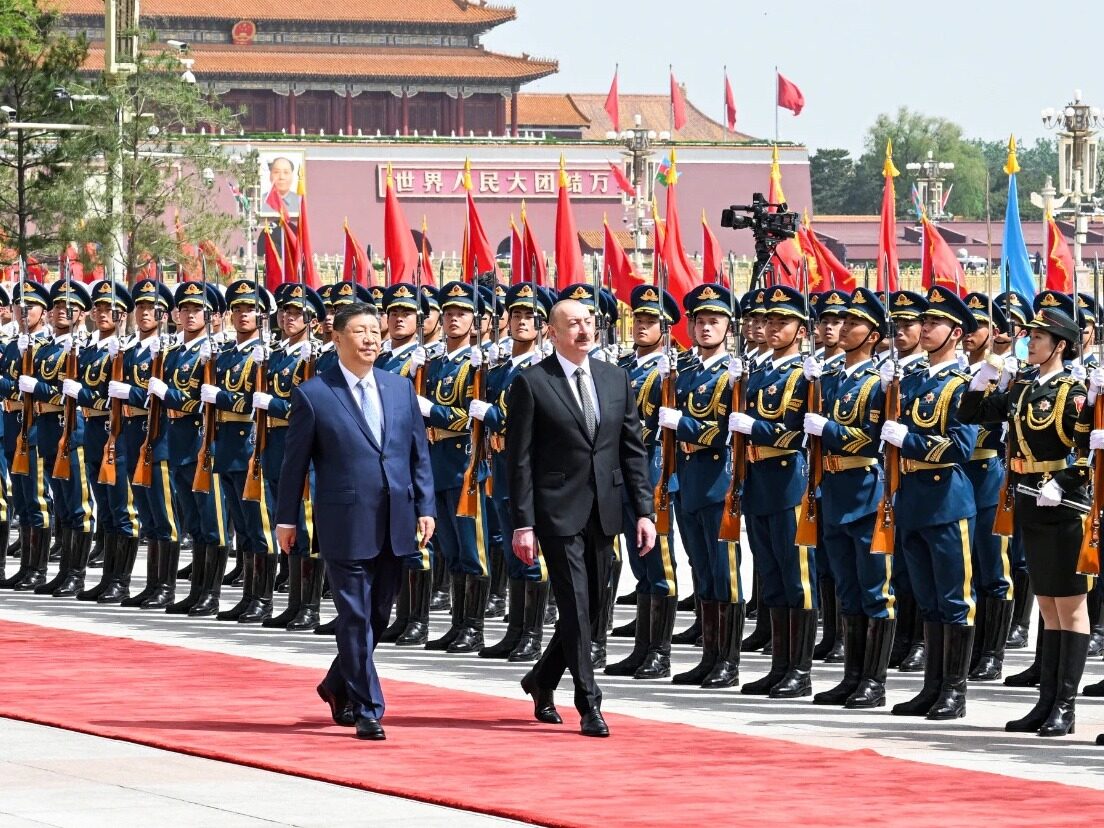- This is the world's largest clean energy corridor with 6 hydropower stations connected
- It can effectively alleviate the power shortage in Central China, East China, Sichuan, Yunnan, Guangdong and other provinces

As of May 4, 2022, the six cascade hydropower stations of Wudongde, Baihetan, Xiluodu, Xiangjiaba, Three Gorges, and Gezhouba on the main stream of the Yangtze River of the Three Gorges Corporation have exceeded 3 trillion kilowatt-hours of cumulative power generation for many years. According to preliminary calculations, 3 trillion kWh of clean electricity is equivalent to saving about 910 million tons of standard coal and reducing carbon dioxide emissions by about 240 million tons.
The Wudongde, Baihetan, Xiluodu, Xiangjiaba, Three Gorges and Gezhouba hydropower stations on the main stream of the Yangtze River constitute the world's largest clean energy corridor. According to reports, the total installed capacity of the six cascade power stations in the world's largest clean energy corridor is 71.695 million kilowatts, which is equivalent to the three Three Gorges. The tense situation of electricity consumption plays an important role in the safe and stable operation of the power grid, and provides strong support for the transmission of electricity from west to east. Carbon peak, carbon neutrality goals.

The cliffs on both sides of the strait confront each other, and the Yangtze River flows eastward. From upstream to downstream, there are 6 large-scale hydropower stations in Wudongde, Baihetan, Xiluodu, Xiangjiaba, Three Gorges, and Gezhouba in sequence, or the long dam lies on the river, or the arch dam embraces the mountain. Can, the rushing river water turns into green electricity, lighting up the lights of thousands of homes.
Today, going up the Yangtze River, five of the six giant cascade hydropower stations, Gezhouba, Three Gorges, Xiangjiaba, Xiluodu, Baihetan, and Wudongde, constructed and operated by China Three Gorges Corporation, rank among the top 12 in the world List of hydropower stations. This means that the Yangtze River Basin has become the world's largest clean energy corridor, providing a steady stream of green power for high-quality economic and social development.
Six cascaded power stations in a row
The Three Gorges Hydropower Station, which has 32 huge generating units, can generate more than 100 billion kWh of electricity annually. It is the backbone power source for China's west-to-east power transmission and mutual supply between north and south, and it is also the commanding height of hydropower in the world. But it is not the starting point for the construction of the world's largest clean energy corridor.
In December 1988, at the mouth of Xiling Gorge in the middle reaches of the Yangtze River, Gezhouba Hydropower Station, the first dam of the Yangtze River in the early 1970s, was fully completed and put into operation, which officially opened the prelude to the large-scale utilization of clean energy in the Yangtze River and contributed to the Three Gorges Project. Construction has accumulated valuable experience.
The stone walls of the Xijiang River were erected more, the clouds and rain in Wushan were cut off, and the high gorge came out of Pinghu. Six years later, the world's largest hydropower station, the Three Gorges Hydropower Station, officially started construction. Due to the insufficient domestic manufacturing level at that time, when the Three Gorges Left Bank Power Plant units were invited for bidding, China introduced 14 sets of 700,000-kilowatt giant units for the first time through international bidding. Surprisingly, the foreign technology is not fully suitable for the actual situation of the Three Gorges Power Station, and the Three Gorges builders immediately started to study it. Hard work pays off. After nearly a month of demonstration and discussion, the Three Gorges builders finally found a solution. Li Zhixiang, the former deputy director of the Three Gorges Power Plant, said that we were anxious at the time. This experience made us realize that we must have our own turbine manufacturing technology.
The distance from the power station on the left bank of the Three Gorges to the power station on the right bank is only more than 1 kilometer, but the development level of hydroelectric generating units has spanned a gap of 30 years. Li Zhixiang said that among the 12 units of the Three Gorges Right Bank Power Station, 8 units are domestically produced units with higher independent intellectual property rights, and the 6 units of the underground power station have a higher degree of localization. In July 2012, the Three Gorges Power Station with a total installed capacity of 22.5 million kilowatts was completed, successfully raising the utilization level of the Yangtze River's hydropower resources to 10 million kilowatts for the first time.

China Hydropower is in the southwest, and Southwest Hydropower is in Jinsha. As the construction of the Three Gorges Project achieved the initial goals of water storage, navigation and power generation, the Three Gorges Group began to march towards the Jinsha River. In June 2014, the Xiluodu Hydropower Station with a total installed capacity of 13.86 million kilowatts was fully put into operation for power generation; in July of the same year, the Xiangjiaba Hydropower Station with a designed installed capacity of 8 units and a total installed capacity of 6.4 million kilowatts was fully completed and put into operation; in June 2021, the world's seventh , Wudongde Hydropower Station, the fourth largest hydropower station in China, was fully put into operation to generate electricity.
On December 21, 2022, the last unit of Baihetan Hydropower Station, the world's most technically difficult hydropower station with the largest single-unit capacity and the second largest installed capacity, successfully completed a 72-hour trial run and officially put into operation for power generation. So far, all 16 million-kilowatt hydroelectric generating units of Baihetan Hydropower Station have been put into operation to generate electricity, which marks that China has built the world's largest clean energy corridor on the Yangtze River.

Wang Hao, an academician of the Chinese Academy of Engineering, said that from the Jinsha River to the Yangtze River, there are six cascade hydropower stations in a series, which are well-deserved national treasures. The high-quality and cheap clean energy output by them will generate huge ecological, social, economic and other comprehensive Benefits create a new business card for China Hydropower. Data show that after the Baihetan Hydropower Station is fully put into operation, the total installed capacity of the six hydropower stations on the main stream of the Yangtze River will reach 71.695 million kilowatts, with an average annual power generation of about 300 billion kilowatt-hours, equivalent to an annual reduction of 249.6 million tons of carbon dioxide emissions.
Li Peng, director of the Three Gorges Cascade Water Transfer Department of China Three Gorges Corporation, said that cascade hydropower stations have a large total power generation capacity and strong peak-shaving capabilities, and play an important role in optimizing energy structure, maintaining stable operation of the power grid, and promoting energy conservation and emission reduction. The next step will be to actively promote the optimization and upgrading of existing hydropower stations, and strive to contribute more clean energy guarantees to the country.
The formation of the corridor benefits the common people
The world's largest clean energy corridor, the most critical function is to deliver green energy to the eastern region as an important project of power transmission from west to east. But the super hydropower station, as the country's most important weapon, has more social benefits than that.
How big is the world's largest clean energy corridor? In terms of installed capacity, the six giant cascade hydropower stations constructed and operated by China Three Gorges Corporation on the main stream of the Yangtze River have installed a total of 110 hydropower units, with a total installed capacity of 71.695 million kilowatts, ranking first in the world and equivalent to the national installed capacity of electricity in Mexico; among them, the Three Gorges , Baihetan, Xiluodu, Wudongde, and Xiangjiaba hydropower stations rank first, second, fourth, seventh, and eleventh in the world in terms of installed capacity respectively. In terms of stand-alone capacity, the world's largest single-capacity hydroelectric generating units are concentrated here, including 1 million kilowatts in Baihetan, 850,000 kilowatts in Wudongde, 800,000 kilowatts in Xiangjiaba, 770,000 kilowatts in Xiluodu, and 700,000 kilowatts in Three Gorges. , while the maximum single-unit capacity of other hydropower stations at home and abroad is only 700,000 kilowatts.
How important is the world's largest clean energy corridor? After the corridor is completed, it will have a profound impact on people's production and life. First of all, it will effectively alleviate the power shortage in the southern region. Through joint scheduling and coordinated operation, the 6 giant power stations have an average annual power generation of 300 billion kwh, which can effectively alleviate the power shortage in central and eastern China, Sichuan, Yunnan, Guangdong and other provinces, and contribute to the safety and stability of west-to-east power transmission and power grids. Operation plays an important supporting role. In terms of energy saving and emission reduction, about 90.45 million tons of standard coal can be saved every year, and about 250 million tons of carbon dioxide emissions can be reduced, which will play a positive role in improving my country's energy structure and boosting the realization of the double carbon goal.
Second, enhance flood control and disaster mitigation capabilities. This corridor spans 1,800 kilometers, forming cascaded reservoirs and strategic freshwater resource pools with a total storage capacity of 91.9 billion cubic meters. The flood control storage capacity accounts for more than half of the total flood control storage capacity of the Yangtze River Basin in 2022. It successfully coped with the Yangtze River 2016 2017, regional floods and 2020 basin floods. The joint flood control dispatch of cascade reservoirs has improved the flood control standards of coastal cities such as Yibin, Luzhou, and Chongqing, and relieved the flood control pressure in the middle and lower reaches of the Yangtze River.
During the dry season, the world's largest clean energy corridor has accumulatively supplied more than 34 billion cubic meters of water to the downstream, increasing the depth of navigation in the middle and lower reaches by 0.9 meters, improving the navigation conditions of the golden waterway in the main stream of the Yangtze River, and effectively ensuring the water demand for spring farming and production and living downstream. As a booster to promote the construction of the Yangtze River Economic Belt and the coordinated development of the regional economy, the world's largest clean energy corridor has the advantages of large investment, strong driving force, and huge comprehensive benefits.

Again, ensure smooth shipping. The cascade power stations have made the channel of the Sichuan River smoother through joint dispatching. During the flood season, the optimized real-time dispatching of the cascade power stations has greatly reduced the flood peak flow, and the safety of shipping has been significantly improved.
The Jinjiang River has not been accessible by boat since ancient times, and the water is rushing to the sky and the sky is high. For thousands of years, traffic congestion has been one of the stubborn diseases that have caused the economic development along the Jinsha River to sluggish. After the completion of the Baihetan Hydropower Station, the total length of the four cascade reservoirs in the lower reaches of the Jinsha River is about 612 kilometers. After the implementation of the dam overturning and transfer facilities, the Panzhihua-Shuifu whole river section can be realized through water and land transport. China Unicom has created conditions for the construction of comprehensive three-dimensional traffic corridors.
By building the world's largest clean energy corridor, China's hydropower industry has also achieved a historic leap from following, paralleling, and then leading the world. Lei Mingshan, chairman and party secretary of the China Three Gorges Corporation, said that from the beginning of the Three Gorges to the end of Baihetan, we have realized the national production of independent design, independent manufacturing, independent intellectual property rights and independent important raw materials for hydropower equipment manufacturing. Follow up, run side by side, to lead at the end, such a leap. During half a century of construction, the single-unit capacity of China's hydropower units has increased from 170,000 kilowatts at Gezhouba, the first dam on the Yangtze River, to 1,000,000 kilowatts at Baihetan. The ability to integrate and integrate complete industrial chains such as materials and manufacturing. Today, more than 800,000 kilowatts of hydropower units in the world are all produced in China.
How strong is the world's largest clean energy corridor? They indicate that China's hydropower development and scientific research strength has been significantly enhanced, integrating the world's advanced hydropower construction and management concepts, forming strong hydropower engineering technology, and overcoming a series of world technical problems. Major breakthroughs have been made in key areas such as excavation and support of super-large caverns, large-volume hydraulic concrete dam materials and temperature control and crack prevention, high water head and large discharge capacity, flood discharge and energy dissipation, and digital dynamic control of the whole process of engineering construction. This demonstrates China's leading edge in the field of hydropower and clean energy development and construction.
Under the dual carbon goals, the huge potential of the world's largest clean energy corridor has not yet been fully tapped. The lower reaches of the Jinsha River are rich in wind energy and solar energy resources. On the basis of deep development and utilization of water energy resources in the basin, relying on large-scale hydropower bases, using hydropower regulation capabilities and sending channels to promote the integrated development of water, wind and wind, will Effectively reduce the cost of comprehensive development of renewable energy and inject new impetus into local economic and social development.
At present, the unified dispatching and coordination of the entire Yangtze River Basin is not smooth enough. The development owners of the reservoir station groups in the middle and upper reaches of the Yangtze River present a diversified pattern. Driven by interests, the comprehensive functions of the reservoir station group and their coordination with other upstream and downstream projects have not been well coordinated. . At the same time, there is not yet a mature model for the coordinated operation of water, wind, and wind. How to combine the current energy structure and power consumption situation to optimize the joint operation of cascade reservoirs and maximize the benefits of integrated water, wind, and wind is still a big challenge.
In this regard, it is necessary to further establish and improve communication mechanisms at different levels among water conservancy departments, power grid companies, and water conservancy and hydropower project management units, strengthen information sharing, strengthen solidarity and cooperation, and solve problems faced in the process of water conservancy and hydropower project dispatching in a timely manner. Local governments and power grid companies should provide support to leading enterprises in the acquisition of wind and wind resources and the integrated dispatching and management of water and wind, so as to better support the integrated operation of water, wind and wind, explore a replicable integrated operation mode, and promote the full play of differences. The synergistic effect of clean energy helps to achieve the dual carbon goals as soon as possible. Editor/He Yuting
Comment
 Praise
Praise
 Collect
Collect
 Comment
Comment
 Search
Search














Write something~